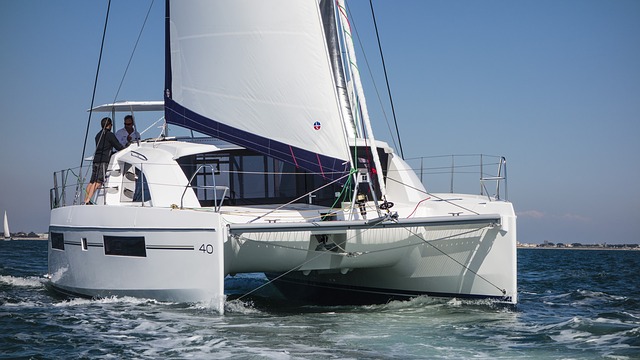You’re counting down the days to the London Boat Show. You find yourself browsing through the classified boat ads whenever you’ve got a free minute. You’ve also spent enough time on the water to realise that yachting (as opposed to powerboating) is most definitely your thing… These are all pretty clear signs that the time’s approaching to invest in your own yacht.
But what should be on your mind as you consider your options? How do you avoid ending up with a boat-shaped albatross around your neck? We take a look…
Put romance aside and think in terms of practicalities…
Perhaps even more so than with a house or a car, there’s always the danger of becoming smitten with the first craft you come across without thinking carefully about whether it really fits the bill. So first things first; draw up an old-fashioned list of requirements.
Think about what the boat is going to be actually used for. Are you drawn to sailing as a challenge and do you see yourself tackling long passages and competitive races? At the other end of the spectrum, are you looking for a stress-free way of entertaining friends and family? Do you intend taking to the water with fellow sailors or inexperienced spectators? Bear in mind that a boat that ticks lots of different boxes when it comes to passenger creature comforts and below-deck accommodation may not be the easiest yacht to manoeuvre if you intend to put it through its paces and do a lot of longer term travel.
Design: monohull or catamaran?
There’s no right or wrong answer here – and it’s worth trying to get as much practical experience of both types of boats as possible to determine what design is most likely to deliver you the type of sailing experience you’re looking for. Here’s a summary of what to expect from both hull types…
You’ll appreciate a monohull yacht if….
…you want a pure sailing experience. A comfortable and easy ride for yourself and your passengers isn’t necessarily your number one priority. You’re actively looking for a vessel that heels and one that’s capable of sailing well upwind. Movement when at anchor doesn’t concern you either!
You’re more likely to prefer a catamaran if…
…you and your guests will appreciate stability at anchor and at sea, roominess and speed. A pair of parallel hulls translates into more room for everyone on board. For one thing, you’ve got that large foredeck that’s ideal for sunbathing as well as offering plenty of room down below. Smoother going when under way usually results in fewer guests complaining of sea-sickness – although there is often a tendency for cats to pound and slap in confused seas and cross-swells.
Choose your size
Budgets is usually a deciding factor here – but even if you’ve got plenty of cash to play with, bear in mind that with a bigger boat comes the potential downside of less manoeuvrability. Regardless of the size, can you find your way around the sail handling system? With the right system in place, even if you’re looking in the 25-45 ft. range, you should be able to find something suitable for a relative novice.
Straight from the showroom or second-hand?
A brand new boat certainly isn’t immune to teething troubles, although the big draw of buying new is that everything is still under warranty and you can call on the yard in the event that difficulties crop up. There’s also the option of specifying the yard-fitted extras you require The downside is of course the increased cost: you’re always going to be looking at substantially less boat for your money by buying new, even when you factor in the promise of greater fuel economy that the latest models tend to bring.
Just a quick glance through rightboat.com or boatshed.com gives you a taste of how easy it is to filter your search according to budget, spec and location to leave you with a suitable crop of second-hand options. Pay special attention to the number of hours on the engine and browse the Yacht Designers and Surveyors’ Association to source a marine surveyor for a full report before you consider buying.
Get realistic on price…
For a second-hand boat, the surveyor’s report is vital for telling you how much outlay you are going to be looking at over and above the asking price to cover essential refitting. This should also give you a picture of ongoing maintenance costs. Consider carefully where you are going to store the boat and research mooring or berthing fees in your local area. Finally, be sure to leave a generous allowance (at least 10% of the purchase price) for contingencies. The good news is that for both new and second hand vessels, it’s often possible to negotiate a discount (sometimes up to 10%) on the asking price.
Getting help…
It’s worth contacting a specialist marine insurance broker such as Bishop Skinner when you’re considering your buying options. Getting some expert advice to help point you in the right direction when it comes to obtaining finance, checking legal title and how to deal with the contract can help ensure that buying that dream yacht remains a hassle-free process. Somewhere there’s a yacht with your name on it – so happy hunting!
